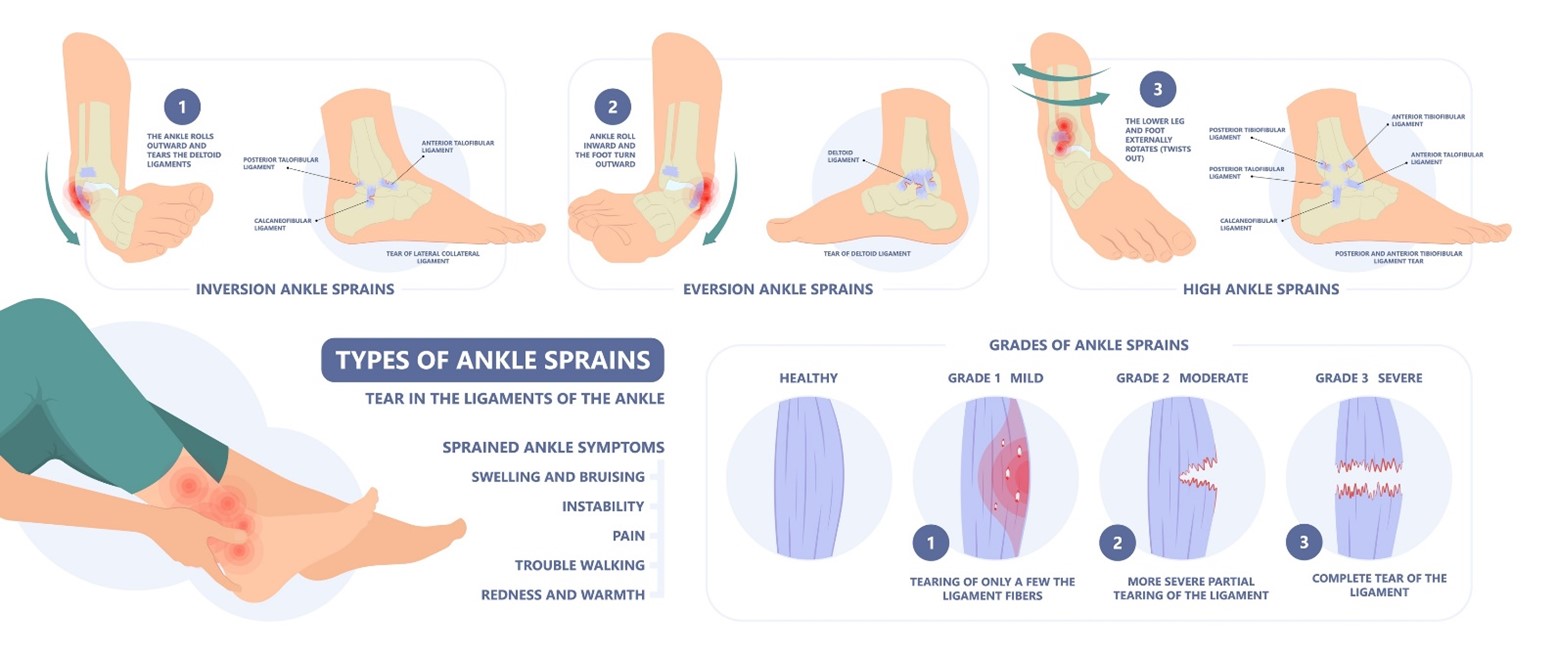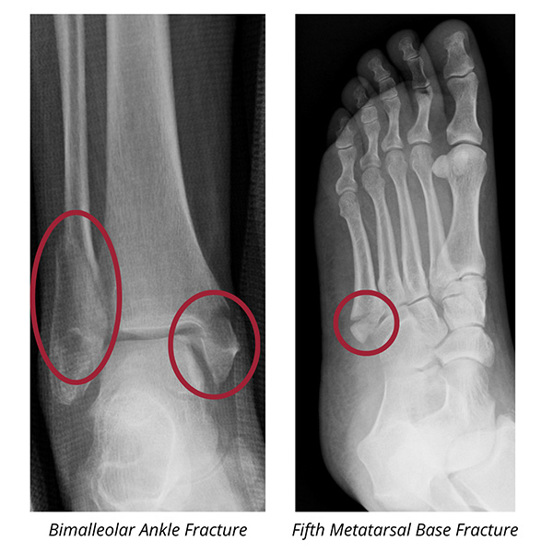
This article is part two of a three-part series where Dr. Jeremy M. Saller answers common questions about ankle sprains, from the injury to diagnosis and treatment. Dr. Saller specializes in the treatment of foot and ankle issues.
Diagnosing an ankle sprain includes understanding how the injury occurred and determining the severity of the injury. Your doctor will need to examine your foot and ankle to properly diagnose the injury.
When to seek medical attention for an ankle sprain
Minor sprains may not need immediate medical attention. However, if you can't bear weight on the foot or ankle, you should seek medical attention to get the proper treatment.
More serious ankle sprains and ankle or foot fractures are usually associated with severe pain when bearing weight. Attempting to just “walk off” a more serious injury can result in further injury to the ankle.
How does a doctor diagnose an ankle sprain?
The history of the rolled ankle – what you tell the doctor – along with the physical examination findings of tenderness, swelling and bruising over the ankle ligaments is enough to make the diagnosis of an inversion ankle sprain.
Often, ankle X-rays will be taken to make sure the bones are not fractured. In more severe cases, your primary care physician, urgent care physician or emergency room physician may refer you to an orthopedic surgeon or a podiatrist. The orthopedic surgeon will perform a physical exam and review the X-rays.
Although an MRI is often not needed to the make the diagnosis, in cases of a severe injury or an injury that fails to heal in an appropriate time period, your orthopedic surgeon may order an MRI in order evaluate all the bony and soft tissue structures around the ankle in greater detail.
How is the severity of an ankle sprain classified?
Ankle sprains are classified based on the severity of the injury to the ligament as grade 1, grade 2 or grade 3.
- Grade 1 ankle sprain: The ligament is stretched but not torn. The outside of the ankle will usually be sore and painful and slightly swollen. In most cases, you will be able to walk and bear weight.
- Grade 2 ankle sprain: The ligament is partially torn. This type of injury will cause more severe pain and swelling which will last longer after the injury. It often will be difficult to bear weight on the ankle secondary to the pain. Bruising over the lateral ankle is also usually present. This occurs due to internal bleeding around the damaged ligament.
- Grade 3 ankle sprain: The ligament is completely torn. There will be severe pain, significant swelling and bruising. Because the ligament is completely torn, your ankle with be unstable and you won't be able to bear any weight on the ankle. Complete tears will take longer to heal and have a much higher risk of chronic ankle instability if not treated appropriately.

What other common injuries are seen when you twist or roll your ankle?
Ankle fractures (a broken bone) can occur from the same type of twisting injury that occurs with a lateral ankle sprain.
The most common ankle bone fracture is a lateral malleolus fracture which occurred when the lower end of the outside ankle bone (the fibula) is broken. In more severe injuries, the inside of the ankle joint (the medial malleolus) can be broken as well. This is called bimalleolar ankle fracture. Another serious ankle injury occurs when the lateral malleolus breaks along with ligament on the inside of the ankle (deltoid ligament).
Inversion injuries also can cause a fracture of the base of the fifth metatarsal. The fifth metatarsal is the foot bone on the outside of the foot. In these cases, the swelling, bruising, and tenderness will be located over this part of the injured foot.
Soft tissues other than the ankle ligaments can be damaged from an ankle sprain. The peroneal tendons are two tendons that run on the outside of your leg behind the lateral malleolus. These tendons can often be injured in ankle inversion injuries. Minor injuries the tendons can heal on their own. More severe tears of the tendons often require surgical repair.
In severe ankle sprains, the ankle joint cartilage can be damaged. The most common place for this to happen is the dome of the talus bone. This is called an osteochondral dissecans lesion. Mild osteochondral “cracks” can be treated without surgery. In more severe cases in which the cartilage is partially or fully separated from the underlying bone, surgery is often necessary.
Want to learn more about ankle sprains? Check out the other two parts of this series:
Get the jump on ankle sprains: Ankle anatomy and injury
Get the jump on ankle sprains: Ankle sprain treatment
About Dr. Saller
Jeremy M. Saller, MD, is a board-certified orthopedic surgeon who practices at BayCare Clinic Orthopedics and Sports Medicine in Green Bay, Wisconsin. Dr. Saller specializes in general orthopedic surgery with a special focus on foot and ankle orthopedics and pediatric orthopedics. He joined BayCare Clinic in the summer of 2023.
A note from BayCare Clinic
The content of this article, including text, images, and graphics, is for general informational purposes only. It is not intended to substitute for professional medical advice, including a medical diagnosis and treatment plan.